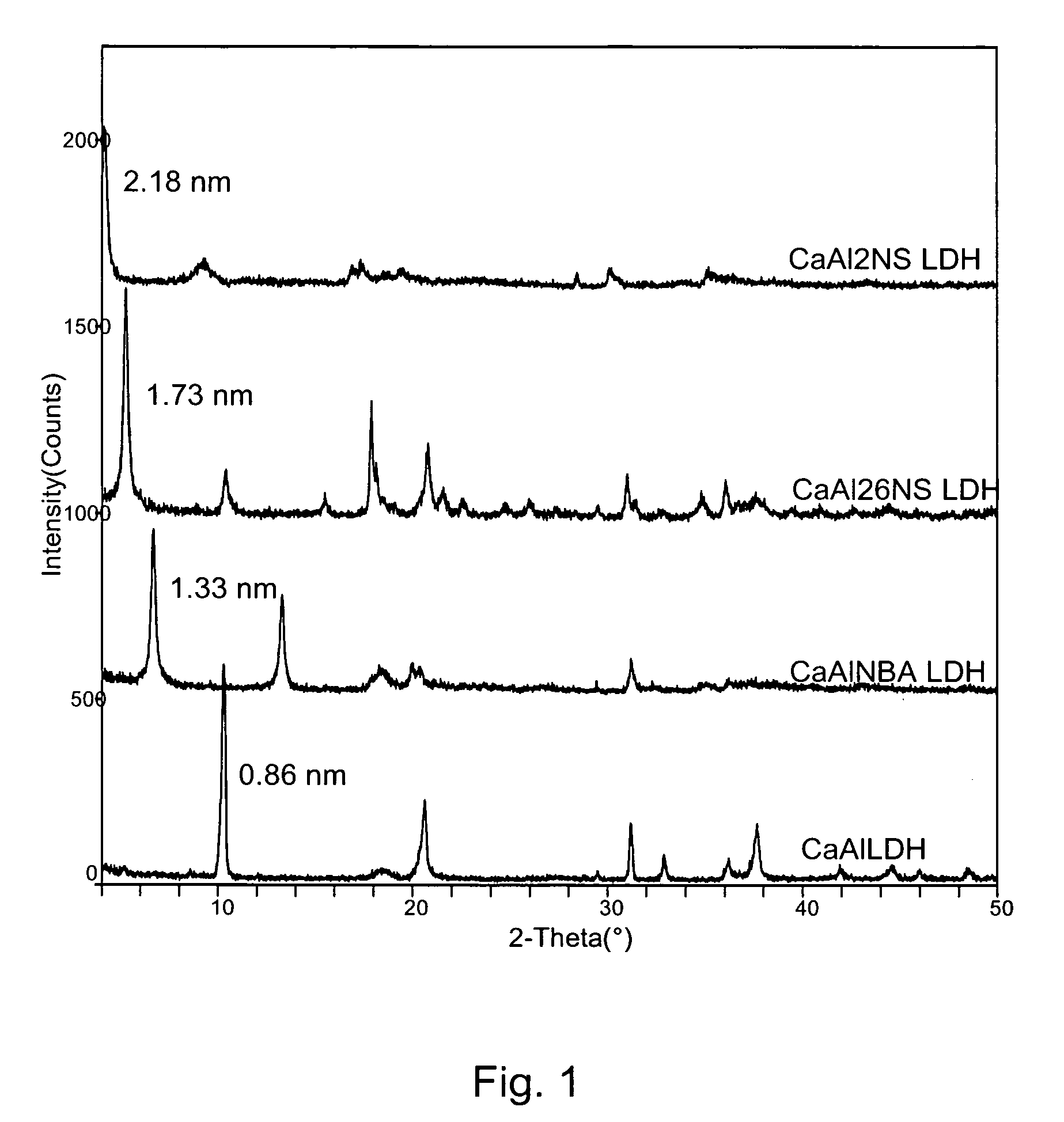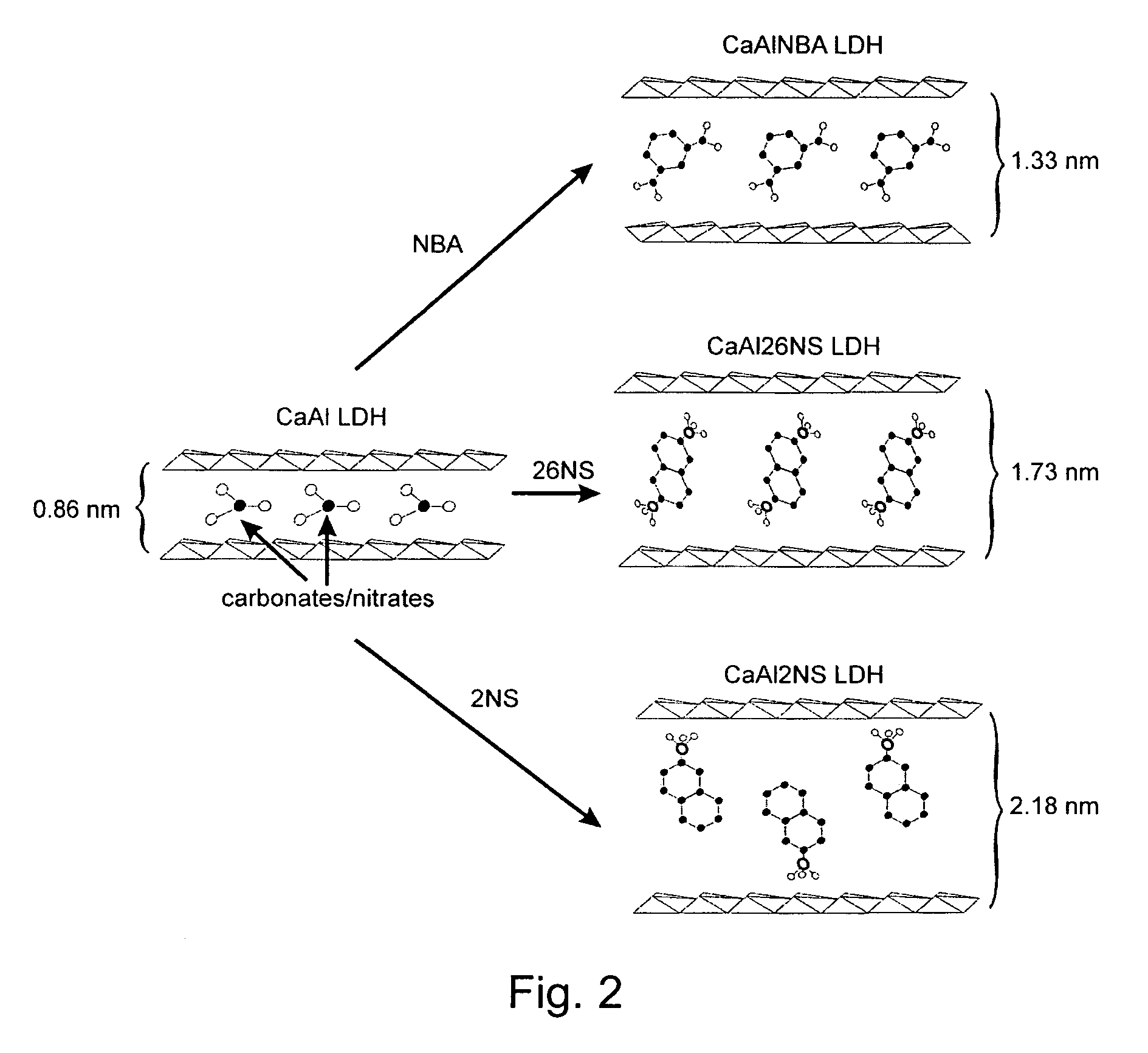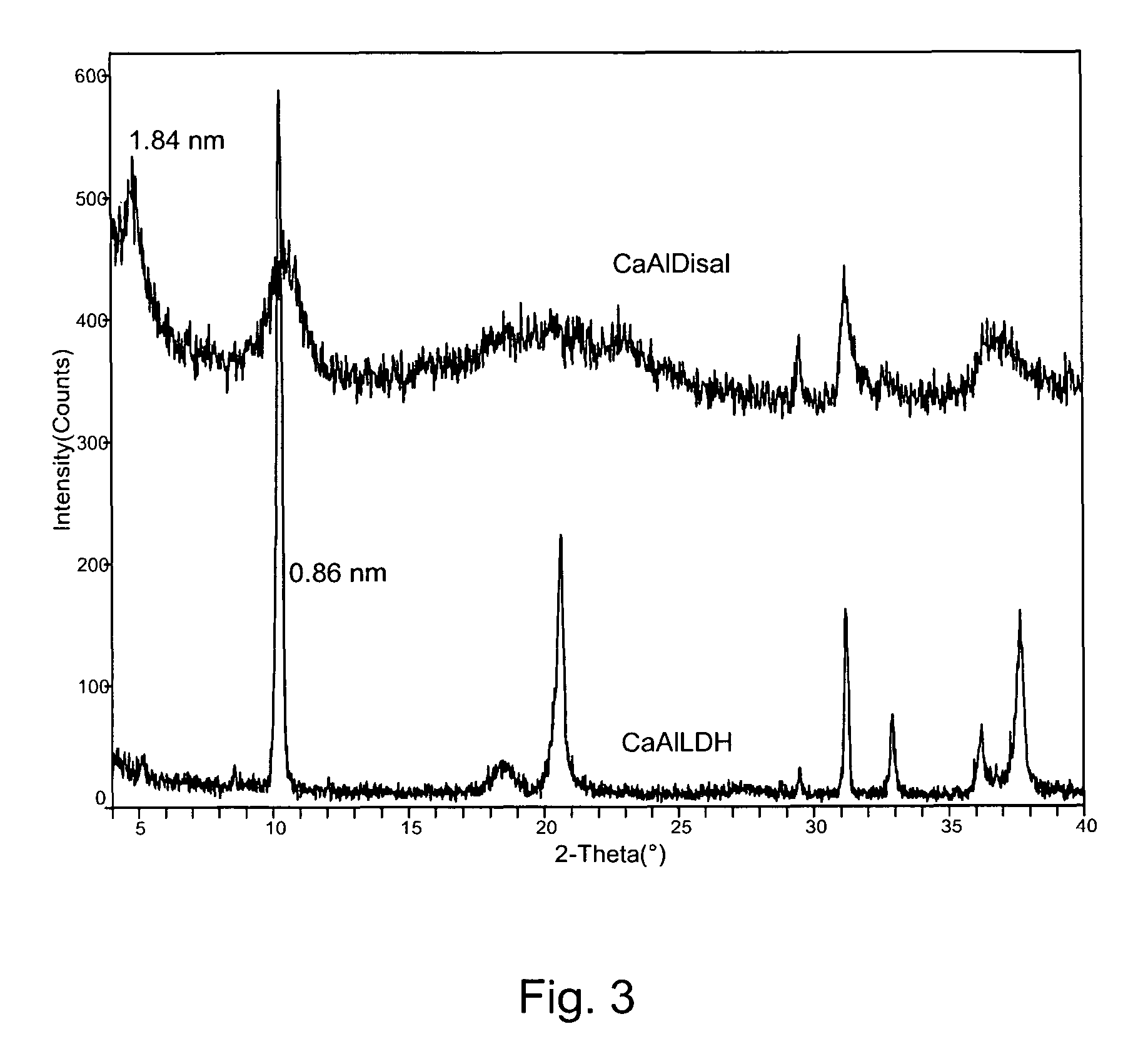Controlled release of chemical admixtures
a technology of chemical admixtures and admixtures, which is applied in the direction of climate sustainability, solid waste management, sustainable waste treatment, etc., can solve the problems of dispersion, not necessarily optimal for the desired chemical effect, and limited control of admixture action in concrete and other materials
- Summary
- Abstract
- Description
- Claims
- Application Information
AI Technical Summary
Benefits of technology
Problems solved by technology
Method used
Image
Examples
example 1
Preparation of Controlled Release Formulations
[0044]Preparation of a CaAl LDH
[0045]A CaAl LDH was prepared by a pH controlled co-precipitation technique of the corresponding metal nitrate salts at room temperature. Typically, a solution containing 0.28 moles of Ca(NO3)2.4H2O and 0.12 moles of Al(NO3)3.9H2O in 320 ml of distilled water was added drop wise to a solution containing 0.6 moles of NaOH and 0.4 moles of NaNO3. The pH of the final mixture was 9.6. The suspension was heated for 16 h at 65° C. with vigorous stirring, after which the solid precipitate was collected by filtration and washed thoroughly with distilled water several times and then with acetone. The cake-like material was then dried 16 h at 100° C. in vacuum.
[0046]Intercalation of an Organic Molecule in CaAl LDH
[0047]Intercalation reactions of organic molecules were performed using anion exchange reactions known in the art. The reactions were carried out under nitrogen to avoid contamination with carbonates from th...
example 2
Characterization of Controlled Release Formulations
[0048]Powder X-ray diffraction (XRD) was performed on a Scintag XDS 2000 X-Ray diffractometer using Cu—Kα radiation at 45 kV and 35 mA between 4 and 650 (2θ with a graphite secondary monochromator). FTIR spectra were recorded on a Bohmem MB 100 instrument. Thermal analyses on powder samples (10-20 mg) were carried out using a Seiko simultaneous thermal analyzer (STA) TG / DTA320 in flowing Ultra zero air (150 mL / min) at 20° C. / min from room temperature to 1000° C. Scanning electron microscopy and chemical analyses (SEM / EDX) were conducted using a Cambridge Systems Stereoscan™ 250 instrument equipped with an Oxford Instruments Inca™ 200 EDS.
[0049]X-ray Diffraction (XRD) Analysis
[0050]Ca / Al (molar) ratio found for the CaAl LDH by EDS (energy dispersive spectroscopy) was equal to 2, suggesting the following formula: Ca2Al(OH)6NO3.mH2O. The diffraction pattern for the synthetic material CaAl LDH (FIG. 1) shows a typical layered structure ...
example 3
Deintercalation of Controlled Release Formulations
[0066]In order to test the ability of the CaAl LDH to release the organic admixture, a series of experiments were undertaken on different compositions and under different experimental conditions, namely pH, charge density of CaAl LDH and concentration of the organic admixtures.
[0067]The deintercalation process was tested by exposing different formulations to a simulated concrete pore solution at room temperature. An example is described as follows:
[0068]An amount equal to 0.5 g of the formulation was added to an aqueous solution of NaOH. The mixture was stirred at room temperature for 15, 30, 60, 120 and 180 min. The resulting material was retrieved by vacuum filtration and drying at 65° C. overnight. Two different concentrations of NaOH were tested: 0.1 and 0.2 M.
[0069]FIGS. 8a and 8b depict XRD profiles of two deintercalation processes of nitrobenzoic acid (NBA). FIG. 8a illustrates the release of NBA molecules in a 0.1M NaOH mediu...
PUM
| Property | Measurement | Unit |
|---|---|---|
| molar ratio | aaaaa | aaaaa |
| cation exchange capacities | aaaaa | aaaaa |
| cation exchange capacities | aaaaa | aaaaa |
Abstract
Description
Claims
Application Information
 Login to View More
Login to View More - R&D
- Intellectual Property
- Life Sciences
- Materials
- Tech Scout
- Unparalleled Data Quality
- Higher Quality Content
- 60% Fewer Hallucinations
Browse by: Latest US Patents, China's latest patents, Technical Efficacy Thesaurus, Application Domain, Technology Topic, Popular Technical Reports.
© 2025 PatSnap. All rights reserved.Legal|Privacy policy|Modern Slavery Act Transparency Statement|Sitemap|About US| Contact US: help@patsnap.com



